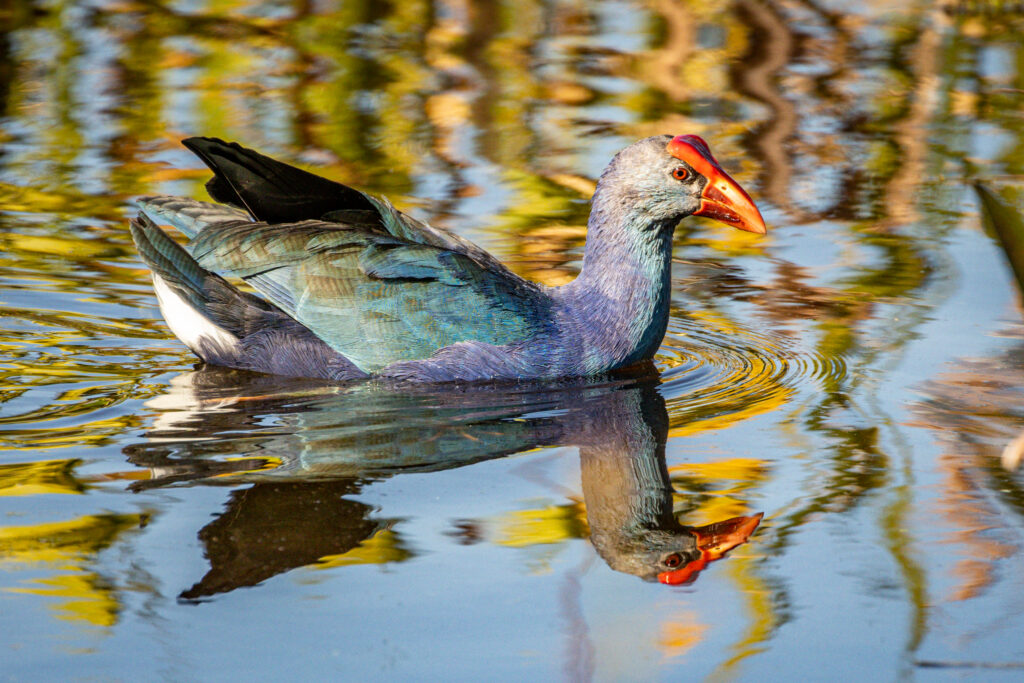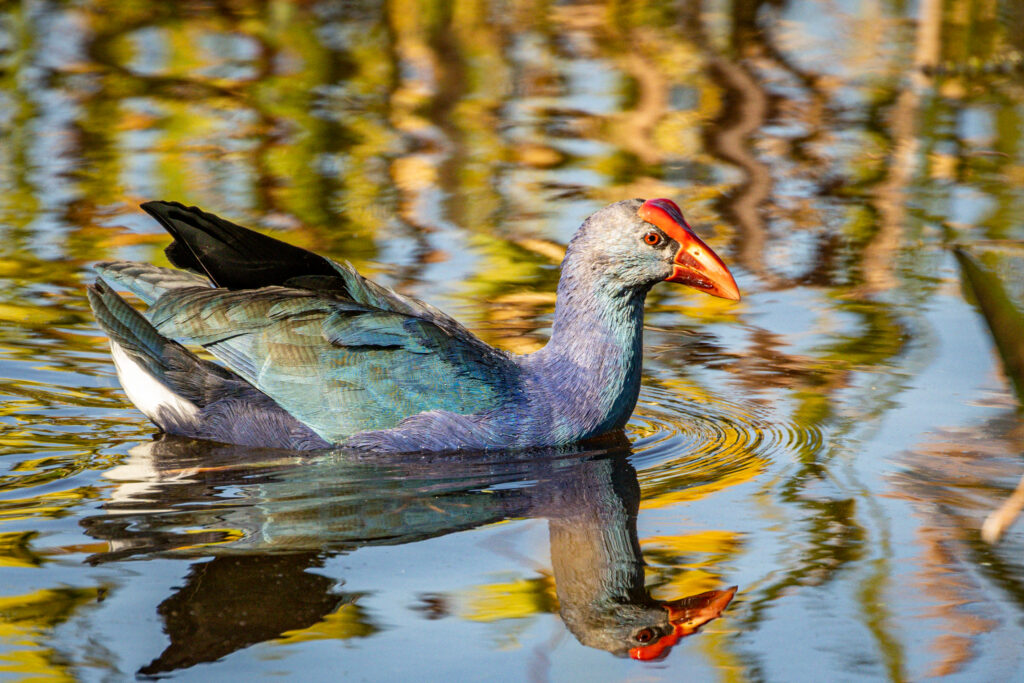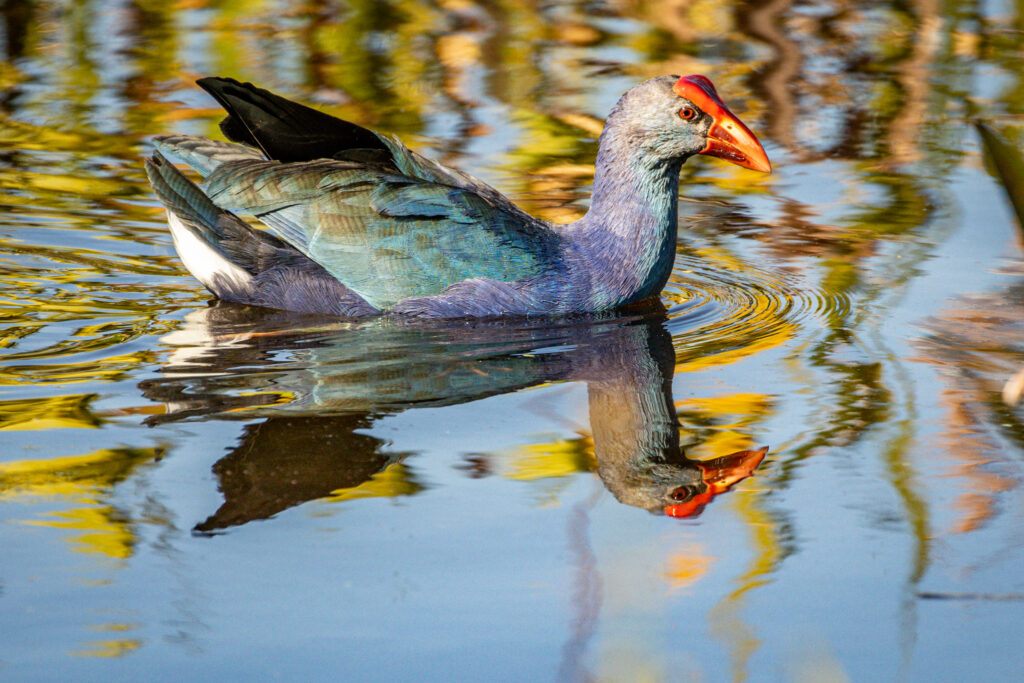Reflections on Reflections
Last week I presented three variations of the same bird and its reflection and invited your responses. It was an even split between Shot A and Shot B (with one vote for Shot C). See the comments for each:
Shot A – Centered with the top of the both heads in the image equidistant to the top and bottom of the frame. Half of the respondents like this best. As Veneziano puts it, “I like A most, partly because it most closely follows the rule of thirds.” The line a third of the way down from the top goes through the actual bird’s eye and the the line one third from the bottom of the frame goes through the reflection’s eye. In this case the centerline goes through the area where the bird meets its reflection. This technique brings the viewers’ eyes to both bird and reflection equally. I would use this technique in instances where there is an excellent reflection – showing a mirror image of the bird. For me, Shot A’s reflection is not quite that good so it actually detracts from the image of the bird – which is the primary object of our photograph.
Shot B – The top of the reflected head nearer the bottom of the frame. Half of the respondents selected this technique and this is how I usually frame my reflection shots. J. Babbitt wrote, “…the subject of the image is the bird, not the reflection. Just like an image with a beautiful flower, berries, perch, etc, the reflection should be used to draw attention to the bird, not [its reflection].” Using this technique the viewers’ eyes are brought to the primary object of the image, the bird, and then moves to the reflection. I try to position the reflected head just above the bottom of the frame and place the eye of the actual bird along the line of the upper third of the image. Speaking of eyes, when selecting from several reflection shots of the same bird I look for the one in which the reflected eye is most interesting; sometimes its an accurate reflection of the eye and other times the eye might be enlarged or appear to be winking due to a ripple in the water.
Shot C – The top of the actual bird’s head nearer the top of the frame. This was the least favored by our members. John W. wrote, “I like that it draws your eye to the reflection and the bird rather than the background.” It tends bring viewers’ eyes to the reflection first, diminishing the view of the actual bird. The background is reduced in favor of seeing more water. I would use this technique when there is a very interesting reflection or pattern in the water.
As in any artistic endeavor, composing an image of a bird with its reflection comes down to your personal preference, which is fine as long as you understand how your choice will affect where the eyes of your audience will be drawn first, as this then becomes the most important area of the composition. I welcome your further reflections on the subject.
Click Here if you would like to learn more about GreatBirdPics. Membership is free; members can post their own great bird pics, create an online gallery of their works, and receive emails about bird photography and birding.


